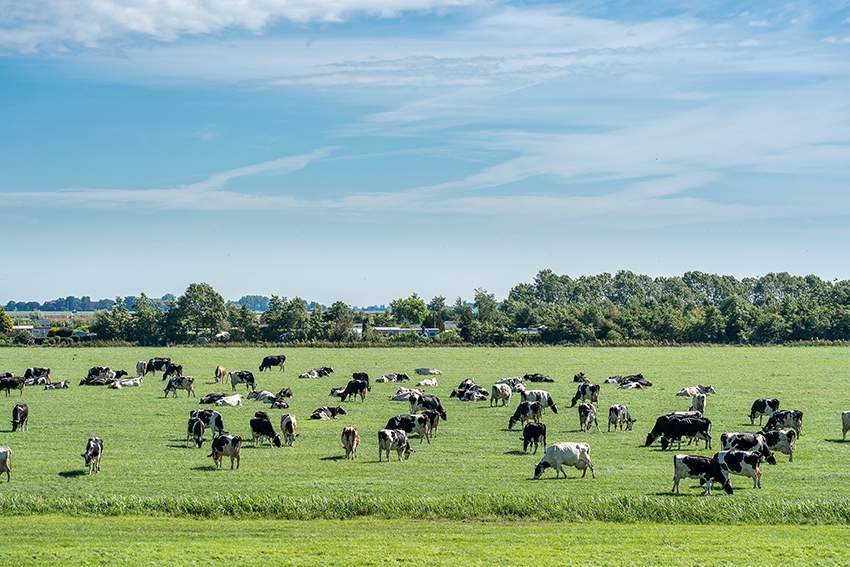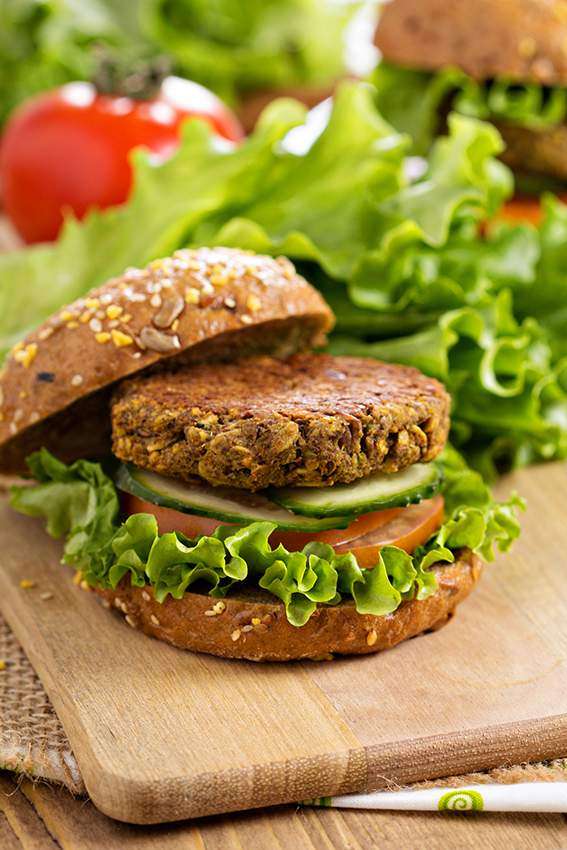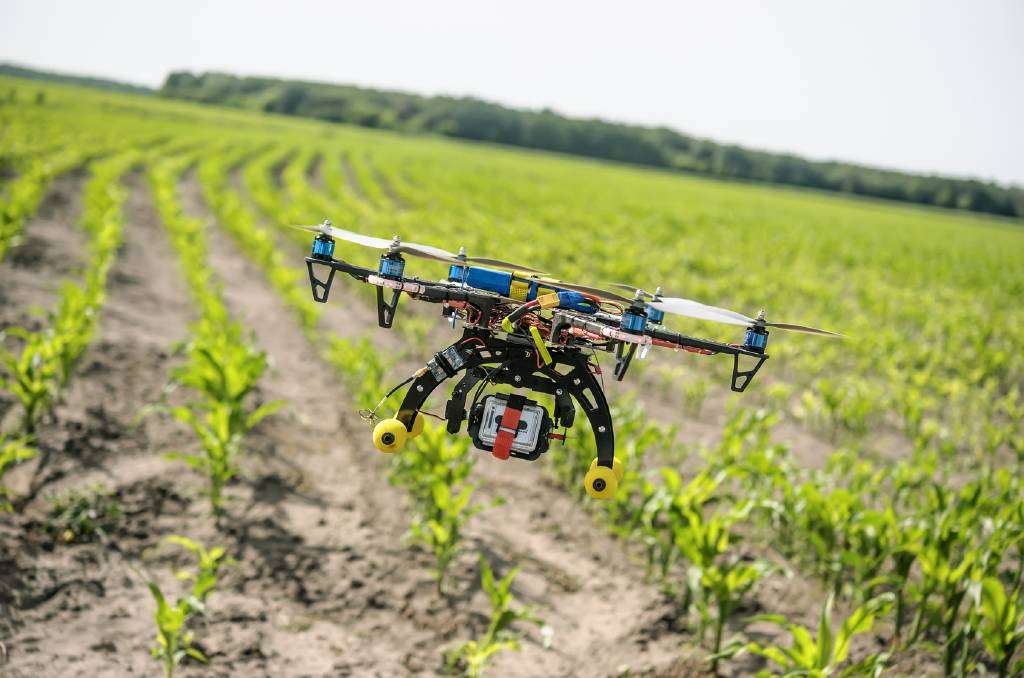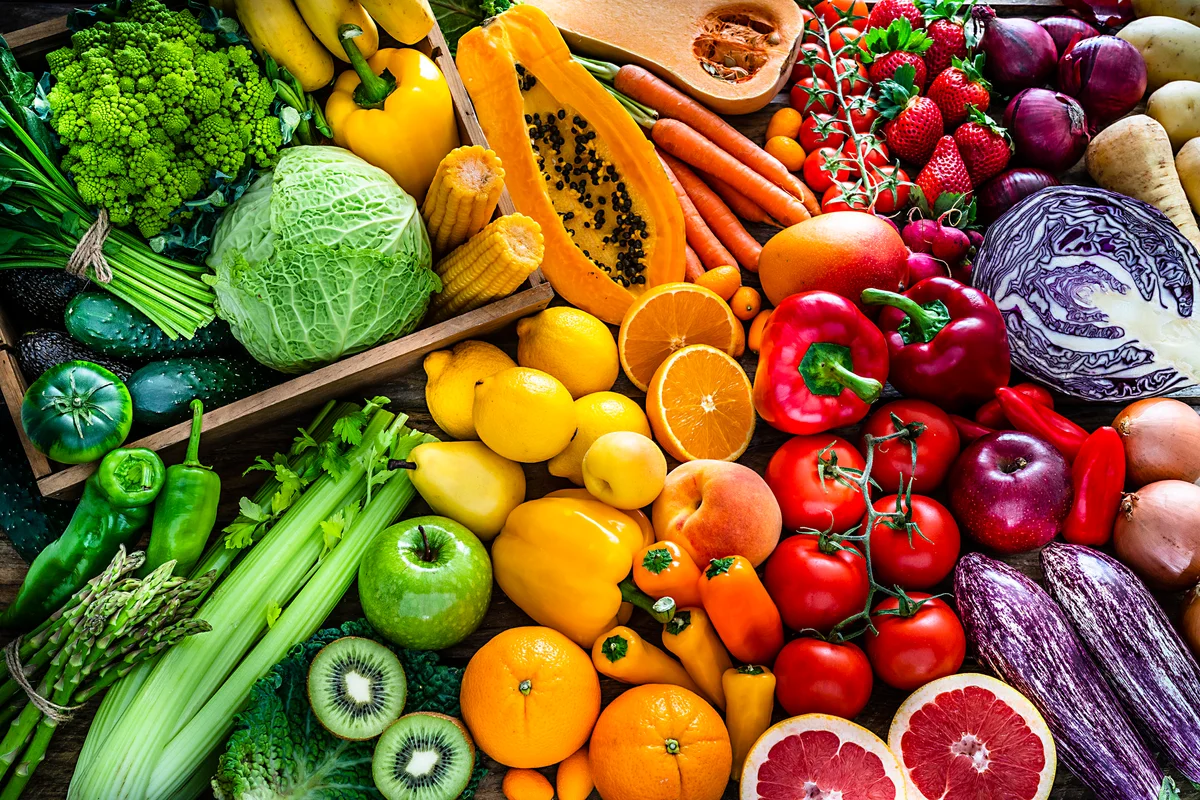The population of humanity is escalating at exponential rates. All these people, you and I included, need nutritious food to maintain our mental, physical, and emotional health and well-being. At the beginning of 2022 828 million people were starving. Indeed, one would think there isn’t enough food, but there is. However, challenges arise in making sure people get the nutrition they need. Factors such as extreme weather, food waste, poverty, and conflicts make feeding everybody difficult. Without adequate food system solutions, people in the global south, who account for the most population growth, will consider going without enough nutrition.

Source: Pixabay.
What are food system solutions?
A food system solution is a strategy to alleviate food supply problems and make the way we produce, distribute and consume food better. These food system solutions aim to ensure that people have enough to eat and that the quality of food is improved. Also, they focus on using resources wisely and treating everyone fairly in the food process. For instance, solutions could involve adopting sustainable farming practices. Also, other food system solutions might focus on reducing food waste and making nutritious food more readily available. In conclusion, these efforts focus on creating food system solutions that work well for everyone and are good for the environment.
Farming and Greenhouse gases
Current models of agriculture produce too many greenhouse gases and are adding to climate change. Industrial farming involves large-scale, single crops, chemicals, machines, and global distribution. Furthermore, while it maximises production, it has drawbacks like environmental concerns, resource-intensive practices, and limited crop diversity.
One-quarter of global greenhouse gas emissions are attributed to food production. Furthermore, about 31% of greenhouse gas emissions in food production come from red and white meat. In fact, the largest portion of food-related greenhouse gases comes from agriculture and land use. This includes emissions like methane from cattle and nitrous oxide from fertilizers. Also, carbon emissions result from deforestation for farming, plus emissions from sources like manure, rice farming, crop burning, and farm fuel. Furthermore, a smaller part of food-related emissions are linked to refrigeration, transport, industrial processes (for example: packaging), and food waste management (Eisen et al., 2022). Investing in food system solutions is vital to cut emissions, reduce waste, and ensure food access for all.

Source: Freepik.
Food Waste
One-third of the world wastes food. Why do we waste so much food? Numerous reasons exist at various points in the food supply chain. For instance:
- Food manufacturers waste food because of inefficiencies in their systems. For instance, in a ready-meal assembly line, multiple machines may be concurrently producing various components of the meal. If a problem occurs with one machine, instead of stopping the entire system for a reset, the machines continue operating while diverting the food as waste.
- Grocery stores contribute to food waste in many ways. They do this by promoting excess purchases, overstocking shelves, miscalculating shelf life, and mishandling products. Similarly, restaurants waste food through inventory mismanagement, menu choices, and oversized portions.
- Consumers waste food by overbuying, overcooking, and throwing out what they don’t eat. In fact, the individual could freeze their food. Additionally, people can repurpose food scraps that are still good into dishes like soup or gumbo.
How Food System Solutions Reduce Food Waste
The most obvious thing we can do to help feed the world right now is reduce food waste with efficient food system solutions. Indeed, these solutions reduce food waste by using a variety of techniques. Some of these are:
- Reducing Overproduction: Optimising food production levels and aligning them with demand can reduce excess food waste, a concern addressed by food system solutions.
- Improved Storage and Transportation: Storing food and transportation both add to climate change through emissions. Improving food storage and transportation reduces spoilage and food loss during transit. A streamlined food system solution would take this into account.
- Food Redistribution: Programs and initiatives, such as food banks, that collect surplus food from producers, retailers, and restaurants and redistribute it to those in need to minimise waste. Food system solutions would mitigate their waste and ensure people had enough to eat if they utilised food banks and other intermediaries.
- Composting and Recycling: We can compost or use food scraps and organic waste for energy generation. This is better than ending up in landfills, where they emit methane. This is something both the food producers and individuals can do.
- Food Preservation: Food preservation refers to the methods and techniques used to prevent or significantly delay spoilage. Furthermore, these methods prevent foodborne illnesses and maintain the nutritional value, texture, and flavour of food products. This is another activity that can take place anywhere on the food supply chain.
- Waste Reduction Policies: Implementing policies and regulations that encourage waste reduction, such as banning food waste from landfills, can drive positive change. Governments control policies.
- Circular Economy Approaches: Indeed, even something as simple as using circular economy principles is effective. These principles are based on waste is minimisation through recycling, repurposing, and reusing resources.
How Food System Solutions Strengthen Food Security
Food system solutions play a pivotal role in achieving food security by orchestrating the entire spectrum of food production, from cultivation to processing and distribution. Effective food system solutions bolster food security through numerous avenues, including increased food production and mitigating shortages. Furthermore, this includes streamlining food distribution to reach remote areas and diversifying food offerings to reduce dependency on a single source. Also, they minimise food waste throughout the supply chain. Moreover, food systems that prioritise nutritious and varied food options can elevate overall dietary quality and nutritional well-being. Indeed, resilient and adaptable food systems help communities withstand and recover from shocks like extreme weather events or economic challenges. Additionally, these systems foster income generation, alleviate poverty and promote equity. It does this by ensuring broad access to food while embracing sustainability, innovation, and technology.
plant-based meat: an alternative Solution
What Is Plant-Based Meat?
In one word? Yum!
Plant-based meat is meat made of plant or vegetable products. It’s main components are protein, fat, and water. This is in order to mimic the basic nutritional value of meat. However, plant-based meats do not have the same vitamins and minerals of the meat they replace and the vegetable products they are produced from. Indeed, they mostly supplement protein and iron (sometimes vitamins). This is because of how they are processed. Common ingredients in plant-based meat are rice, potato and soy protein, pea and mung bean, hemp, and mycoprotein (fungi derived product). Also, plant-based meat is less of a carcinogen than

Source: Freepik.
How Is Plant-Based Meat Made?
Plant-based proteins undergo heat and mechanical treatments to make them appear less processed. Certain producers use an extrusion process, where they feed ingredients through a stationary barrel and a rotating screw mechanism. They can perform this with or without applying heat, leading to the kneading and eventual compression of the product. Other producers utilise wet texturization technology, which involves introducing substantial moisture during the extrusion process, along with starches and fibres that generate a stringy and sinewy texture.
Plant-Based Meat And Greenhouse Gas Emissions
This is where it gets interesting. Animal agriculture occupies 77% of the world’s agricultural land, yet it provides just 17% of the global food supply. Indeed, this inefficiency necessitates agricultural expansion, making it the primary cause of land ecosystem damage. In the United States, if they used all their agricultural land to grow food for humans instead of animals to feed humans, two times as many people would be fed.
Emissions from animal agriculture have three major sources: the conversion of forests and prairies into pasture and cropland, and the production of animal feed. Additionally, emissions arise from animal digestion and the decomposition of animal waste. Plant-based meat produces 30% to 90% fewer greenhouse gases (measured in kg-CO2-eq/kg-meat) compared to traditional meat.
Urban and Vertical Farming
Urban farming and vertical farming occur in cities. Vertical farming stacks crops vertically, while urban farming is any city food production. However, some urban farms use vertical farming, but not all. Both of these kinds of farming can be an abundant and local source of nutrient-rich food for cities. This is important because, according to the United Nations, by 2050 68% of the world’s population will be living in cities. People will need to be producing their own local food to keep transportation costs down along with minimising greenhouse gas emissions.
Vertical farming means growing crops in stacked layers without soil, using methods like hydroponics and controlling factors like light and nutrients. A vertical farm can provide a yield many times greater than that of a conventional outdoor farm. Some key players using this clever technology are Signify (Netherlands), Osram (Germany), Valoya (Finland), AeroFarms (US), Plenty (US), and Sky Greens (Singapore).
New Farming Technologies
There are a few new farming technologies making the rounds. Some of these are:
- Drones: Drones equipped with sensors are employed for crop health monitoring, soil assessment, measuring soil moisture, and identifying crop pests and weeds. Furthermore, they are used in livestock farming to check water sources, monitor herds, and assist with livestock movements, saving time and fuel for farmers.
- Livestock tracking software: Different GPS tracking software for livestock is available, offering valuable assistance and data. For instance, by monitoring cattle movements in feedlots, farmers can quickly spot sick or injured animals and enhance traceability.
- Soil moisture sensors (irrigation) plant and soil health: Soil moisture sensors help farmers keep track of soil moisture levels, especially for irrigation. This knowledge helps farmers use water more efficiently and sustainably.
- Remote monitoring: Remote monitoring systems help farmers watch over their livestock’s water sources, saving time and fuel compared to manual checks. These systems also send alerts in case of issues, ensuring quick responses.

Source: QLD Country Life
Agroecology
Agroecology involves using ecological concepts and principles in agriculture. It means to work in harmony with nature rather than dominating it. In fact, it mitigates climate change, works with wildlife to preserve their habitats, and puts farmers and communities in charge. There are several aspects to agroecology principles including:
- Circular and solidarity economies, which link producers and consumers, offer solutions for sustainability and inclusive development.
- Achieving sustainability in food and agriculture necessitates responsible and efficient governance mechanisms operating at various levels, spanning from local to national to global.
- Agroecology supports food security and nutrition by promoting wholesome, diverse, and culturally suitable diets while also preserving ecosystem health.
- Ensuring the sustainability of food and agricultural systems requires the protection and enhancement of rural livelihoods, equity, and social well-being.
- Boosting the resilience of individuals, communities, and ecosystems is crucial for sustainable food and agricultural systems.
- Increased recycling leads to agricultural production that is more cost-effective and environmentally friendly.
- Innovative agroecological methods yield higher production using fewer external resources.
- Creating synergies improves crucial functions throughout food systems, benefiting both production and numerous ecosystem services.
- Agricultural innovations are more effective in addressing local challenges when they are collaboratively developed through participatory processes.
- In the journey toward agroecological transitions, diversification plays a pivotal role in safeguarding food security, nutrition, and the conservation, protection, and enhancement of natural resources.
Agroecology offers many benefits, from improving yield and profitability to enhancing biodiversity, addressing climate mitigation and providing nutrition. Although it is beyond the scope of this book to fully review the evidence on the multifunctional benefits of agroecology, we provide a short overview and some key studies. As a system that minimizes expensive external inputs and maximizes farm- and community-generated inputs, it is also a boon for the rural poor. A growing body of research indicates that—when appropriately supported and in the right economic conditions—it can outperform conventional systems of agricultural production in many contexts.
Anderson et al.
Go Vegan to support food system solutions
What can you do as an individual at the consumer level to support a better food system solution? Become a vegan. Stepping into a vegan diet has many health benefits. Research indicates that plant-based diets can save money, reduce health risks, decrease cholesterol levels, and diminish the need for medications in treating chronic diseases, including lowering the risk of heart disease-related deaths.
What kind of foods do vegans eat?
Anything plant-based. This includes:
- fruits,
- vegetables,
- legumes (peas, beans, and lentils),
- nuts and seeds,
- grains (bread, rice, and pasta),
- dairy alternatives (soy, coconut, and almond milk),
- and vegetable oils.
What not to eat?
Anything derived from animals, including:
- Honey
- Beef, pork, lamb, and other red meat
- Milk, cream, ice cream, and other dairy products
- Cheese, butter
- Mayonnaise (because it includes egg yolks)
- Eggs
- Chicken, duck, and other poultry
- Fish or shellfish such as crabs, clams, and mussels
However, there are some serious considerations to take into account when making a decision of this magnitude. In fact, opting for a diet that excludes animal-derived foods may be linked to increased instances of depression and anxiety, alongside other observed health concerns. These include diminished bone strength, muscle depletion, skin irritations, hypothyroidism, and anemia among individuals who strictly adhere to a vegan eating regimen.
moving forward
In conclusion, there are many factors to advocate why we should concentrate on food system solutions. The right solution tailored and personalised to suit the environment of a locality can reduce emissions and provide nutritious food for all.

Source: Healthy Women
Why is it essential that we focus on Food System solutions?
Prioritising food system solutions is essential in tackling complex wicked global problems like hunger, malnutrition, and environmental degradation. Embracing these solutions helps us progress toward a future that is more sustainable, equitable, and resilient, benefiting everyone.
achieving the United Nations Sustainable Development Goals (SDGs) and how they link to Food System solutions
The United Nations Sustainable Development Goals (SDGs) are a roadmap for a more sustainable future for humanity. Transitioning to food system solutions addresses several of these goals in various ways.
“End hunger, achieve food security and improved nutrition and promote sustainable agriculture” is SDG 2. SDG 12 is “ensure sustainable production and consumption patterns”. “Take urgent action to combat climate change and its impacts” is SDG 13. SDG 15 is to “protect, restore and promote sustainable use of terrestrial ecosystems, sustainably manage forests, combat desertification, and halt and reverse land degradation and halt biodiversity loss”. These 4 SDGs tie into food system solutions by ending hunger, reducing waste, mitigating climate change, and restoring land.
Furthermore, food system solutions also tie into SDG 3, which deals with health. Indeed, ensuring people have access to nutritious food will assist in maintaining the well-being of people. SDG 9 is about sustainable industry. Food system solutions seek to revolutionise how food is produced, transported, sold, and consumed from a wasteful system to a sustainable one. Also, SDG 11 is about sustainable human settlements. Vertical farming as part of a food system solution aims to create sustainable agriculture within the boundaries of our cities.
A Thrivable Framework
THRIVE is passionate about ensuring a thrivable future for all of humanity. Food system solutions are a vital component of this future. They ensure stable food supplies, sustainability, and resilience, promoting healthy diets, fairness, and economic growth, while also preserving the environment and supporting global development goals. These solutions pave the way for a brighter future where communities, ecosystems, and economies prosper.
THRIVE’s logo, a ciambella chart, outlines two important boundaries for humanity to adhere to. These boundaries are – a social floor, denoting the minimum for an entity’s survival; and an environmental ceiling, where too many resources are taken from the environment. Food system solutions ensure that the minimum needs for a person’s survival are met by delivering nutritious food. Furthermore, by changing the way food is produced, transported, and sold food system solutions aim to stay beneath the environmental ceiling.
If you want to learn more about THRIVE and walk with us on our journey to thrivability, please peruse our blogs, hit subscribe on our YouTube channel, check out our podcasts, register for our regular webinars, or sign up for our informative newsletters. We would love to have you thrive with us.























